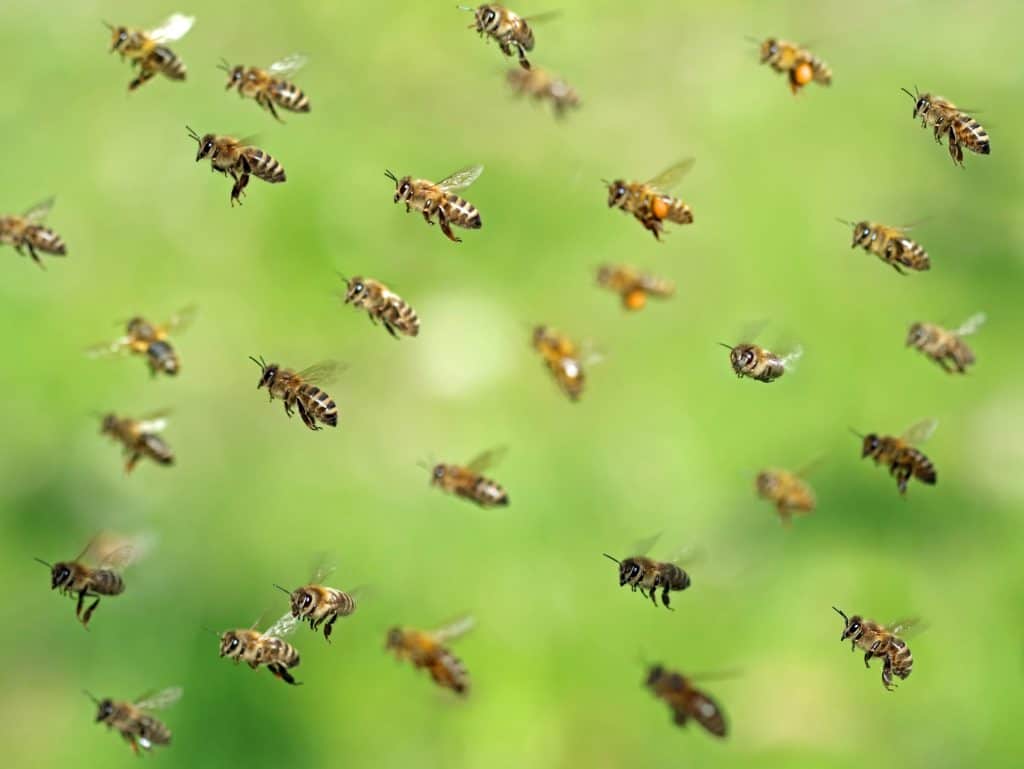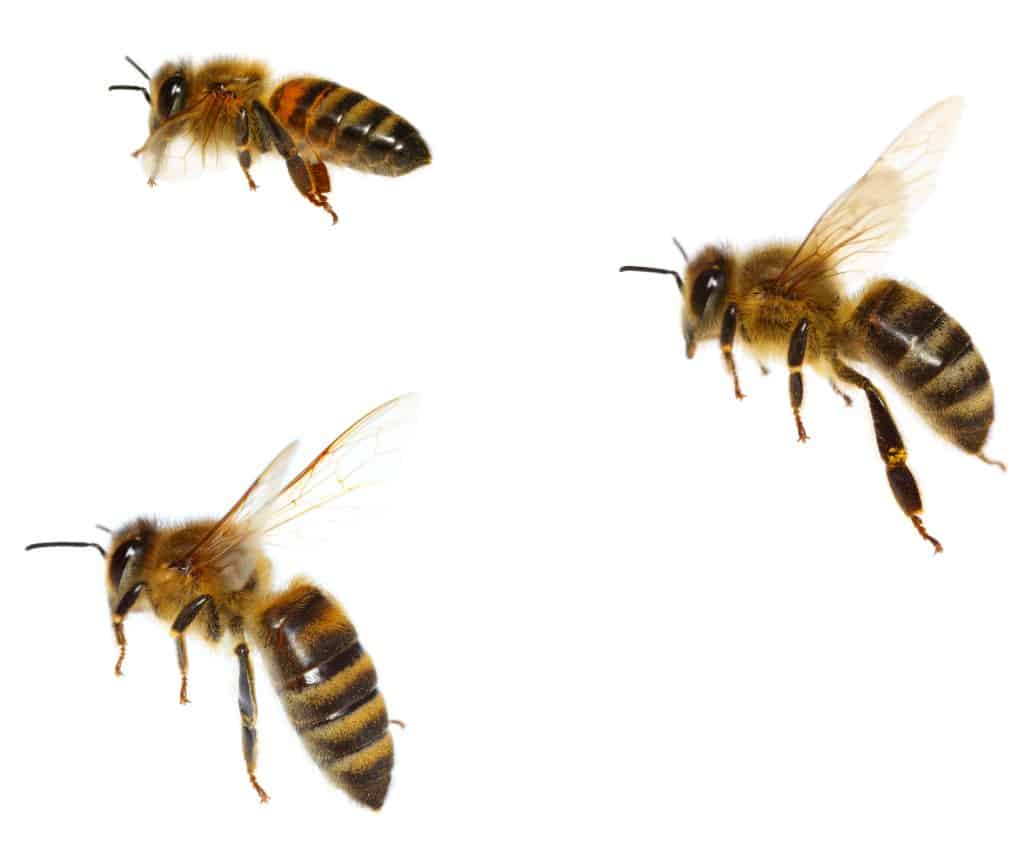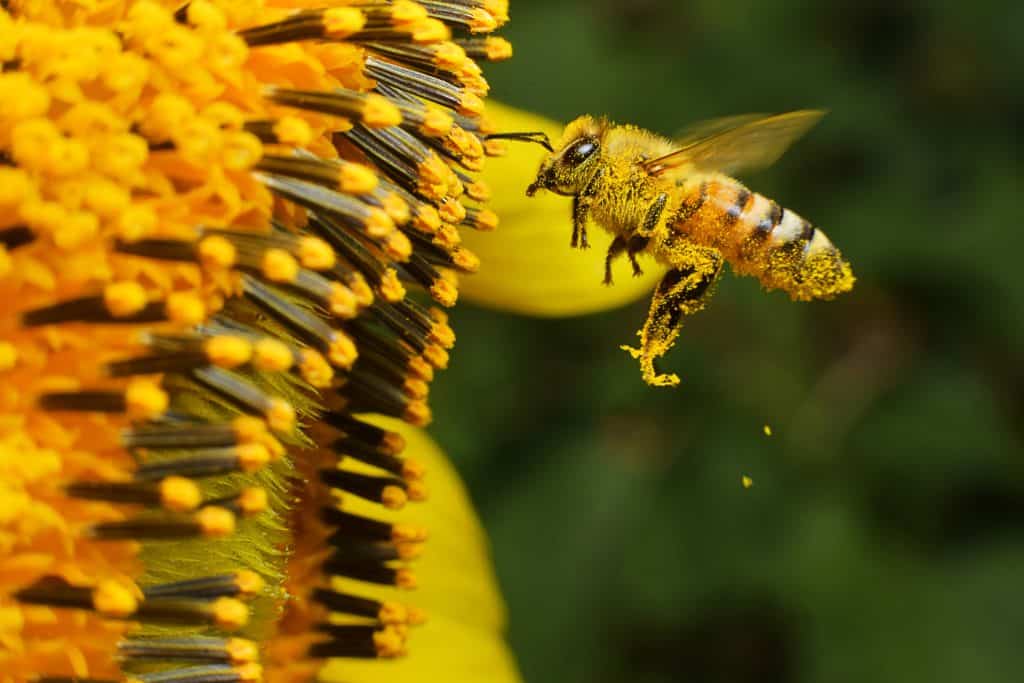We all know that bees fly, but how much exactly? Whether you’re just curious about bees, or you’re a beekeeper wanting to know exactly how much your bees fly in a day, we have the answers.
A honey bee worker can fly as fast as 15 miles per hour or more and can fly up to around six miles away from its hive. However, there is quite a bit of variation among how much bees fly depending on what type of bee it is and what their duties within the hive consist of.
Queen bees typically barely fly at all, only leaving the hive for mating and swarming activities. Drone bees fly mostly to mate as well. And of course, there are our solitary bee friends and bumblebees, all of whom are believed to fly quite a bit less overall than honey bees.

Why Do Bees Fly?
Bees fly for many reasons, with the primary one being foraging for food. Worker bees fly between their hives and nearby flowers to collect nectar and pollen, which they use as food sources. Worker bees also fly close to their hive to defend their nest from predators and other insects that might invade their nest.
Bees also fly in order to mate, with drone bees and queen bees meeting up at drone congregation areas and mating in mid-air. Drone congregation areas are places where drones gather and wait for new queens to arrive for mating.
Finally, honey bees fly while swarming, which occurs when a colony becomes overcrowded. During swarming, part of a colony splits off to form a new colony and flies away from the original hive to find a new nesting site. All of the bees, including a queen bee and many worker bees, fly together towards the new nesting site, where they begin to build a new hive once they arrive.
How Do Bees Fly?

Bees fly using their wings and thorax muscles, moving them back and forth and up and down at the same time to create lift. Lift is the sum of all of the physical forces acting on a bee’s body that allows it to move perpendicular to a horizontal flow of air. The simplest explanation of lift is simply that the bee’s wing pushes air downwards or backward, and this, in turn, moves the wing and the bee’s body upwards and forward relative to gravity.
It was not understood how bees fly for a long time because it seemed mathematically impossible that their tiny wings could lift their bodies. But eventually, scientists figured out that bees can twist and rotate their wings while flying, making it possible for them to stay in the air due to the flexibility of their wing muscles.
Bees have two sets of flight muscles, direct muscles that are attached to the wings, and indirect muscles within the thorax that are not connected to the wings directly. Bees can move these muscles in combination to move their wings however they want in order to fly.
Do All Bees Fly the Same Amount?
Not all bees fly the same amount. There is significantly less research on the travels of solitary bees, but it is thought that they fly quite a bit less than honey bees, probably because they do not need to create the large amounts of honey that honey bees do. Additionally, there are differences within the honeybee colony as far as which bees fly and how much they fly.
Do Queen Bees Fly?
While queen bees do fly sometimes, it is rare to see them outside of the hive. Queen bees mostly stay within the hive, laying eggs and moving around by crawling rather than flying. Queen bees struggle to fly because their bodies are very large in comparison to their wings, making it difficult for them to lift themselves off of the ground.
There are only two times when queen bees fly: during mating and during swarming. When a new queen is ready to mate, she leaves the hive and flies to a drone congregation area, where drones gather and wait for new queens to mate with. Queens can travel up to two or three miles to find a drone congregation area, which is because they need to mate with drones from other colonies in order to avoid inbreeding.
Swarming is a phenomenon in which bees from a colony split off and create a new colony. When the colony is ready to swarm, the worker bees essentially starve the queen so that she will lose body weight and be able to fly alongside them. Once the queen is able to fly, part of the colony splits off and finds a place to congregate outside of the hive. Then, scout bees perform a complex method of finding new nesting sites, which results in the bees moving to a brand new nesting site and establishing a new colony.
Do Drone Bees Fly?
Drone bees fly more than queen bees but less than worker bees. Drones primarily fly later in their lives, taking their first short flights around six or seven days of age, and flying longer distances as they grow older.
Drones mostly fly in order to mate. Drones will gather in one area fairly close to their hive but high in the air, and wait for queens to arrive for mating. They hover in the air and then when the queens arrive, all of the mating takes place in midair.
Do Worker Bees Fly?
Worker bees do most of the flying within a colony, as they are responsible for foraging for the colony. Worker bees can fly up to six miles away from their hives every day to find nectar and pollen to bring back to the hive.
Can Bee Larvae Fly?
Bee larvae do not have developed wings until they emerge as adult bees. Therefore, bee larvae do not fly. They remain in their brood cells within the hive until they are fully developed and then only fly once they have become adult bees.
How Fast Can Bees Fly?

Honey bee workers can fly as fast as 15 miles per hour, or even faster if they are not carrying stores of nectar or pollen back to the hive. Less is known about other species of bees, such as solitary bees or bumblebees.
How Far Can Bees Fly?
Honey bee workers fly up to six miles to find food for their hive. Solitary bees and bumblebees typically fly much shorter distances from their nests to find food. There is a fair amount of variation as far as how far bees fly to find food, depending on how close flowers are to the nest.
How Do Bees Navigate?
Bees orient themselves relative to the sun, meaning they see the light of the sun and navigate using it. Essentially, bees use their own form of trigonometry to detect the angle of sunlight relative to their bodies and navigate relative to it.
Bees can see even in cloudy weather because their eyes are sensitive to polarized light, which is light that is vibrating along a single plane. This means that all of the light waves are wiggling in the same direction, rather than in many directions.
How Much Do Bees Have to Fly to Make a Pound of Honey?
Bees have to fly at least 40,000 miles collectively in order to make one pound of honey. This is why bees work as a team to create honey, as no one bee can fly this much in its lifetime. In fact, individual bees only produce about one-twelfth of a teaspoon of honey in their lifetimes.

